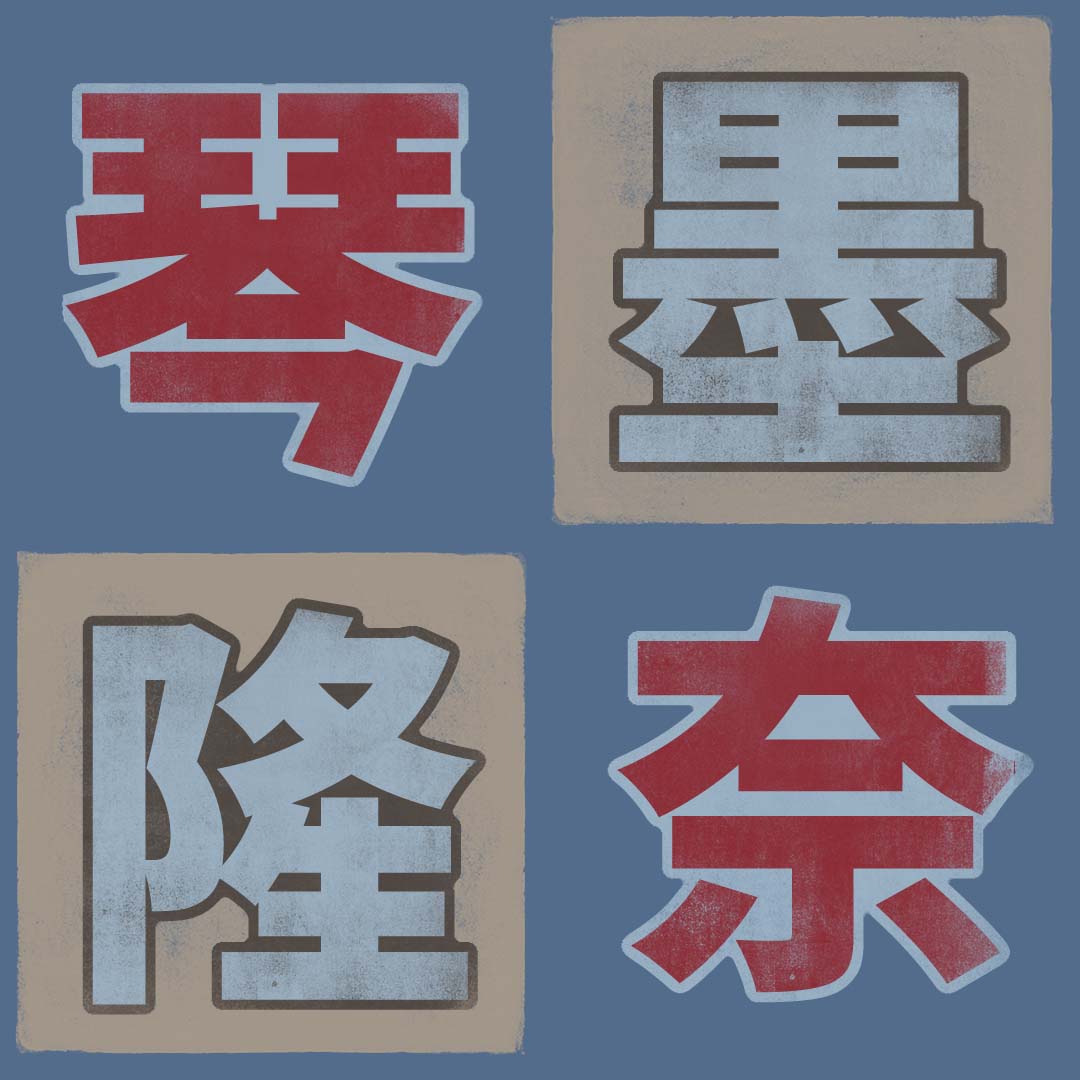
琴
koto
JOK: 1178
The koto (Japanese zither) connects to dragons, blindness, class differences, rice paddies, marriage, and an important myth. Find out why one needs to read each 琴 in 琴の琴 with different yomi. See which natural feature in Japan was named after a type of 琴, and learn about hidden kotos in the garden. Also discover certain Japanese words that always pull on people's heartstrings.
墨
black ink
JOK: 1821
Black ink has left an indelible mark on Japanese culture. People have used it to dye clothes, modify their bodies (e.g., tattoos), and censor information. Find out how the Japanese make solid and liquid ink and how they view brushstrokes as a mirror of the mind. Also learn about sumi-e (ink paintings) and enjoy gorgeous sumi-e from talented artists around the globe.
隆
prosperity
JOK: 1901
In English, prosperous shops, flourishing democracies, and muscular frames have zero in common, but 隆 helps to describe them all. Similarly, you can refer to bulging biceps and newly formed mountains with one adjective. Learn to say, "Silkworm farming flourished during the Edo period," "The Fujiwara clan reached its height in the Heian era," and "He showed up in a stylish suit."
奈
Nara
JOK: 2085
A hiragana was created from 奈. This kanji helps people talk about hellish situations, but that’s not why a book about Kanagawa is subtitled “Towns That Suck, Towns That People Hate.” The Jetsons apparently influenced 8th-century Nara architecture. There have been at least 17 kanji renderings of the name なら. Find out about all these topics and much more in this image-rich essay.
Kanshudo is your AI Japanese tutor, and your constant companion on the road to mastery of the Japanese language.
To get started learning Japanese, just follow the study recommendations on your Dashboard.
You can use Quick search (accessible using the icon at the top of every page) to look up any Japanese word, kanji or grammar point, as well as to find anything on Kanshudo quickly.
For an overview, take the tour.

